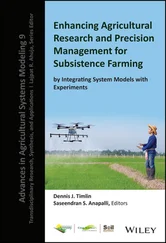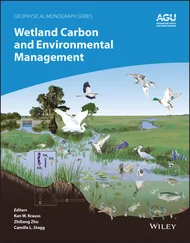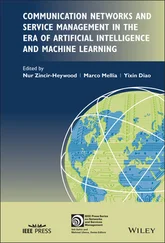Pollutants and Water Management
Здесь есть возможность читать онлайн «Pollutants and Water Management» — ознакомительный отрывок электронной книги совершенно бесплатно, а после прочтения отрывка купить полную версию. В некоторых случаях можно слушать аудио, скачать через торрент в формате fb2 и присутствует краткое содержание. Жанр: unrecognised, на английском языке. Описание произведения, (предисловие) а так же отзывы посетителей доступны на портале библиотеки ЛибКат.
- Название:Pollutants and Water Management
- Автор:
- Жанр:
- Год:неизвестен
- ISBN:нет данных
- Рейтинг книги:3 / 5. Голосов: 1
-
Избранное:Добавить в избранное
- Отзывы:
-
Ваша оценка:
- 60
- 1
- 2
- 3
- 4
- 5
Pollutants and Water Management: краткое содержание, описание и аннотация
Предлагаем к чтению аннотацию, описание, краткое содержание или предисловие (зависит от того, что написал сам автор книги «Pollutants and Water Management»). Если вы не нашли необходимую информацию о книге — напишите в комментариях, мы постараемся отыскать её.
WATER MANAGEMENT Pollutants and Water Management: Resources, Strategies and Scarcity
Pollutants and Water Management
Pollutants and Water Management: Resources, Strategies and Scarcity
Pollutants and Water Management — читать онлайн ознакомительный отрывок
Ниже представлен текст книги, разбитый по страницам. Система сохранения места последней прочитанной страницы, позволяет с удобством читать онлайн бесплатно книгу «Pollutants and Water Management», без необходимости каждый раз заново искать на чём Вы остановились. Поставьте закладку, и сможете в любой момент перейти на страницу, на которой закончили чтение.
Интервал:
Закладка:
3.5.8 The Petroleum and Oil Industry
In India, the demand for oil is set to increase by 4% during 2016–2030. It was reported that petroleum product production increased from 243.5 million metric tons (MMT) in 2016–2017 to 262.3 MMT in 2018–2019 (Invest India 2019c). Pollutants that are released at each step, from starting manufacturing to transportation, are oil spillage, saline water, and phenolic mixtures. Their discharge causes a poisonous effect on plants, aquatic life, and human life, and may lead to tumor formation, cancer, and mutation.
3.6 Major Water Body Pollution Due to Grossly Polluting Industries
3.6.1 The Status of Water Resources in India
The country's inland water resources are listed as rivers and canals; reservoirs; dams and ponds; bells, oxbow lakes; water that is unsafe; and brackish water. Aside from rivers and canals, total water bodies occupy an area of approximately 7 million hectares (Chaudhary and Walker 2019; Gagan 2015). There are few flowing rivers in the desert and they are lost in the desert. There are whole arid regions where evaporation is equal to rainfall, and thus, no airflow. Coastal rivers have medium and small river basins (Chaudhary and Walker 2019).
Together, the rivers Brahmaputra, Ganga, Indus, and Godavari occupy more than half of the country's territory. The entire west coast, extending 1500 km between Surat in Gujarat and Cape Comorin in Tamilnadu, is fed by 14 medium and 18 minor river basins, leaving major river basins including Mumbai, Panji, Cochin, and Trivandrum. On the east coast of Peninsular India, three places have large river basins (Gagan 2015). These three pockets are the area south of the River Cauvery from Madurai to Cape Comorin; the area between the basin of Penner and Cauvery where Chennai and Pondicherry are located; and the area between the basins of Mahanadi and Godavari in Orissa. There is a tremendous variation both in the quantity of discharge from a major basin to a minor one and in the quality of discharge from region to region.
3.6.2 The Quality of Some Major Rivers in India Due to Grossly Polluting Industries Wastewater Discharge and their Impact
The Himalaya, often called as “The water tower of India,” is situated at the Indian north subcontinent and is the main source for the largest rivers. These are the Indus, the Ganges, and the Brahmaputra (Panigrahi and Pattnaik 2017). The water quality of these rivers and other major rivers of India are discussed in detail in the following section.
The Ganga:The river covers (26.3%) of the total geographical area of the country. It is considered as the sacred and holy river in India and covers the states of Uttar Pradesh, Uttarakhand, Delhi, some portions of Haryana and Punjab, Himachal Pradesh, Madhya Pradesh, Rajasthan, Bihar, and West Bengal (Agarwal 2015). The Gamukh, the ice cave of Gangotri, is considered as the origin of the River Ganga. Water quality of the Ganga with respect to levels of coliform bacteria was found to be in excess (greater than two lakh). Approximately 260 million liters per day of industrial wastewater is directly discharged into the river (Srivastava et al. 2016). Season‐wise, COD ranges between 12.5 and 65 mg/l, chloride concentration ranges from 14 to 25 mg/l, and sulfate concentration ranges from 25 to 38 mg/l (Srivastava et al. 2016). Total hardness lies in the range of 114–184 mg/l (Srivastava et al. 2016). Kanpur, a city in Uttar Pradesh, is the hub of tanneries and textile units where the Ganga is found to be highly polluted due to industrial discharge. High levels of coliform of up to 100 000 000 per 100 ml and an average BOD of 40 mg/l in Varanasi were reported in a study by Agarwal (2015).
The Brahmaputra:By discharge, the Brahmaputra is considered as the largest river in the world (Panigrahi and Pattnaik 2019). Guwahati city is situated on the banks of the river. According to a study by Kotoky and Sarma (2017), the physicochemical characteristics of the river are mean a pH of 9.37 and mean a DO of 10.76 mg/l. The main cause of river pollution is the discharge of crude oil along with agriculture and municipal run‐off (Kotoky and Sarma 2017).
Yamuna River:The origin of the Yamuna River is the Yamnotri glacier and the different states of India covered by the river are Rajasthan, Uttar Pradesh, Himachal Pradesh, Delhi, Haryana, and Madhya Pradesh (Panigrahi and Pattnaik 2019). There are different industries situated on the banks of the Yamuna River, including electroplating industries, thereby directly increasing the Cr concentration of the river, causing a threat to human health when entering the body through the food chain (Malik et al. 2014). There are almost 359 factories that discharge their effluent directly or indirectly at the Yamuna, further intensifying pollution loads in the Ganga (Maheshwari 2016).
Kali River:The origin of the Kali River is from the village of Antwada, in the Muzaffarnagar district in western Uttar Pradesh. Before meeting the Ganga, it covers the districts of Meerut, Ghaziabad, Bulandshahr, Aligarh, Etah, Farrukhabad, and Kannauj. Different types of effluent are discharged from sugar, distillery, and textile industries. Slaughterhouses and chemical units have made the Kali River almost dead. The water has been deprived of oxygen and has turned into a black color. The concentration of heavy metal is currently exceeding the permissible limit. For example, the Cr level in Muzaffarnagar is 30 times higher than the permissible value, while in Meerut, the Pb concentration is almost 100 times higher than the standard value (Mishra et al. 2015).
Son River:Son River, a tributary of the River Ganga, originates from the Amarkantak plateau. Metal industries are the main cause of Son River pollution (Ahirwar et al. 2015). As per the study analysis carried out by Ahirwar et al. (2015), the TDS (898.5 mg/l) and hardness of the Son River was found to be more than the permissible limit and the other mean values of parameters were a pH of 7.19, Fe of 0.2484 mg/l, Cr of 0.0026, Mg of 14.5 mg/l, and Na of 76.24 mg/l were also higher (Ahirwar et al. 2015).
Gomti River:This river mainly carries the industrial waste pollution from eastern Uttar Pradesh. The water samples of the Gomti River were found to be rich in heavy metals like Cr (2.22–19.13 mg/l), Fe (1606–3412 mg/l), Mn (82.6–263.9 mg/l), Pb (6.3–75.3 mg/l), and Ni and Zn (3.1–101.7 mg/l) (Panigrahi and Pattnaik 2019).
Brahmani River:The characteristics of the Brahmani River area are as follows: a pH of 7.6; mean fluorine of 0.49 mg/l; nitrate of 4.18 mg/l; and mean alkalinity of 48.48 mg/l (Nath et al. 2018). Nitrate concentration is more than the permissible limit of this river which adversely affects fish diversity (Das et al. 2016).
Mahanadi River:The river originates from the Chhattisgarh basin. Cuttack city is located on the banks of the Mahanadi delta. Rourkela steel plant effluents and biomedical waste (Panigrahi and Patra 2013) are the main causes of Mahanadi River pollution. The water of the Mahanadi River is turning toward a condition of eutrophication (Panigrahi and Pattnaik 2019).
Cauvery River:The river originates from Brahmagiri hill. The pH value of the river varies from 6.5 to 9.4. In Salem district, the high‐level discharge of industrial effluents badly affects the planktonic population (Panigrahi and Pattnaik 2019). Different heavy metals have been found in the Cauvery River in excess amounts, such as Cr, Co, Cu, Mn, Ni, Zn, and Pb, which contaminate the water body.
Bandi River:The discharge effluents of textile dyeing units are the main cause of pollution in Bandi River, which is situated at Pali. Water quality deterioration of the Bandi River has an adverse effect on human beings and aquatic ecosystems. Textile dyeing industries have production capacities ranging between 725 and 3625 kg of cloth/day, while abstracting water that comes from this river is in the range of 30–275 m 3/day and daily discharging wastewater has a high BOD and COD ranging from 41–76 l/kg.
Читать дальшеИнтервал:
Закладка:
Похожие книги на «Pollutants and Water Management»
Представляем Вашему вниманию похожие книги на «Pollutants and Water Management» списком для выбора. Мы отобрали схожую по названию и смыслу литературу в надежде предоставить читателям больше вариантов отыскать новые, интересные, ещё непрочитанные произведения.
Обсуждение, отзывы о книге «Pollutants and Water Management» и просто собственные мнения читателей. Оставьте ваши комментарии, напишите, что Вы думаете о произведении, его смысле или главных героях. Укажите что конкретно понравилось, а что нет, и почему Вы так считаете.












